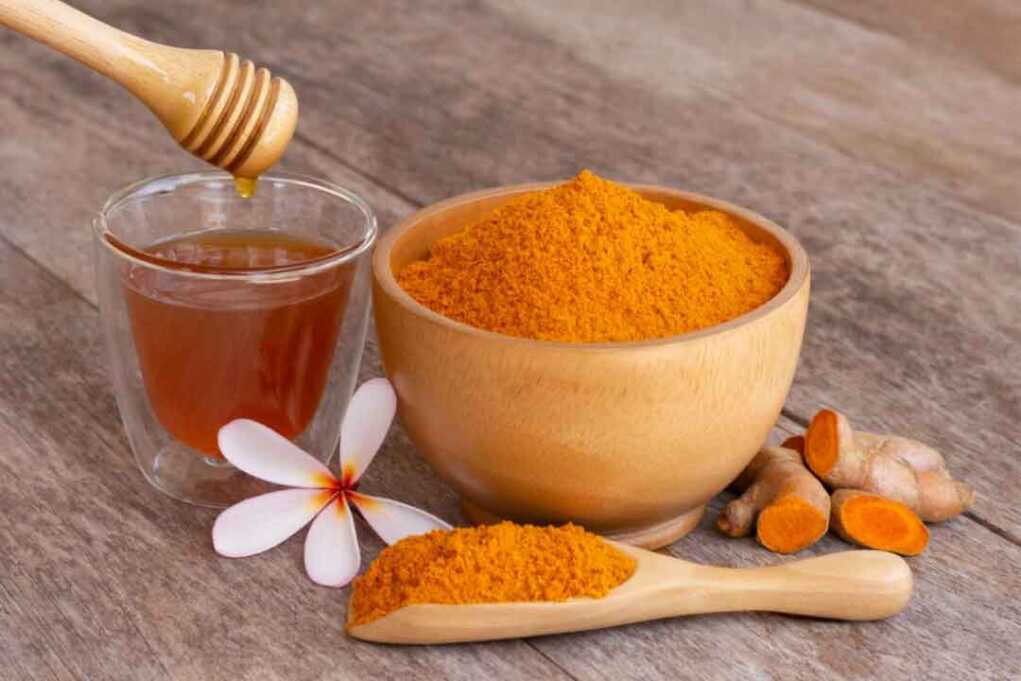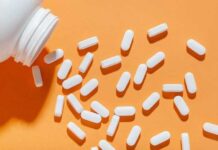In the online ocean of self-help proclamations, strange decoctions, and peculiar natural treatments, there are some pearls.

Social media posts featuring strange decoctions and peculiar natural treatments flood the internet daily, offering hope to those seeking alternatives to established pharmaceutical approaches. A growing number of people are striving to increase their knowledge about herbal remedies, self-applied formulas, and homemade plant-derived compounds, also known as phytopharmaceuticals.
Although this trend certainly spreads awareness and responsibility for one’s well-being, not all health news circulating on the internet is trustworthy.
With the advent of every new movement come those who want to exploit innocent souls for personal profit and power. Therefore, it is smart to apply the principle of “caveat emptor”—caution, common sense, or simply a “buyer beware” attitude.
The Latest ‘Antibiotic’ Hype
One “miracle remedy,” hailed as the most powerful antibiotic, is a concoction of only four components: turmeric, ginger, honey, and the “surprise ingredient” of vanilla.
Armen Adamjan, the TikTok star behind “creative explained,” advises his viewers to take 1 teaspoon of this golden elixir per day to see their bodies heal. The recipe for this mixture on his channel is as follows:
- “ ½ cup of honey
- 1 tsp turmeric
- ½ tsp ginger
- 1 tsp vanilla”
How simple! But bear with me …
Homing In on the Critical Details
If the formula withstood scientific testing, it would seem phenomenal indeed. As reported in The Lancet, the world faces an ever-growing number of antimicrobial resistances and an ever-increasing burden on modern health care systems.
According to the paper, the global threat of antimicrobial resistance (AMR) can be narrowed down to “six leading pathogens for deaths associated with AMR: Escherichia coli, followed by Staphylococcus aureus, Klebsiella pneumoniae, Streptococcus pneumoniae, Acinetobacter baumannii, and Pseudomonas aeruginosa.”
AMR is especially problematic in hospitals, clinics, and other health care settings. According to findings presented in a 2019 International Journal of Molecular Sciences article, up to 15 percent of hospitalized patients are affected by health care-associated infections.
Consequently, treating at least minor infections at home is becoming increasingly enticing for many.
This article will carefully examine all the ingredients to see whether this wondrous elixir making the rounds online can withstand scientific evaluation.
Turmeric as an Alternative Antibiotic
An observational in vitro study shows that Curcuma longa, commonly known as turmeric, is especially useful for combating two of the above-mentioned pathogens. Researchers attempted to treat Escherichia coli and Staphylococcus aureus with a crude turmeric paste and compared that with an aqueous liquid extract and conventional antibiotics. During the year-long examination, all three methods completely inhibited the growth of the bacteria.
Another in vitro study in 2023 found that an extract of the turmeric rhizome can eradicate Proteus mirabilis and the multidrug-resistant Klebsiella.
Turmeric and its antibiotic qualities also have been studied in the animal world and deemed “an alternative to antibiotics in poultry nutrition,” according to a 2023 publication in Translational Animal Sciences. Keeping thousands of chickens in confined quarters has made the use of antibiotics essential in oversized poultry farms and ignited calls for powerful alternatives for antimicrobial-resistant infectious diseases.
Curcumin, the active compound in turmeric, is active against a wide range of resistant bacteria and has shown antimicrobial effects.
Turmeric is something of a jack-of-all-trades, as the yellow-orange root has even more health benefits than its antibiotic properties.
“Curcumin has an anti-inflammatory, antioxidative, antinociceptive, antiparasitic, antimalarial effect, and it is used as a wound-healing agent,” a 2022 study published in the journal Antibiotics reads.
Sometimes there is a problem with the “bioavailability of curcumin in human beings,” the review states, caused by “poor curcumin absorption in the small intestine, fast metabolism, and fast systemic elimination.” However, that should not be a hindrance, as there is no such thing as overdosing on turmeric. Tests showed that we can tolerate a high dosage of turmeric without side effects.
Additional research published in Molecular Pharmaceutics confirms these findings and found that curcumin has broad effects against “cancer, cardiovascular diseases, diabetes, arthritis, neurological diseases, and Crohn’s disease.”
Ginger, Another Wondrous Ingredient
Ginger is another phytopharmaceutical that is being used as an alternative antibiotic in poultry. A 2020 review published in the journal Animals evaluated a number of studies and found that ginger thwarts and controls intestinal pathogens and offers promise as an alternative to antibiotics.
Research published in Molecules investigated the essential oil of ginger in an in vitro study. It was shown to be effective against two of the bacterial strains resistant to antibiotics: Staphylococcus aureus and Escherichia coli. Ginger’s components zingiberene and alpha-curcumene, in particular, seem to be effective antimicrobial ingredients.
According to the experts, ginger has potential as a “nutraceutical,” a food that has a medicinal benefit.
The significance of medicinal plants as alternatives to conventional antibiotics was highlighted in a Nigerian publication in the Scientific World Journal. Ginger, as one of a plethora of medicinal plants traditionally grown in Nigeria, is noted by the review to be a worthy complementary therapy when fighting against multidrug-resistant pathogens. The paper even mentions that ginger not only is a great antibiotic alternative but also lacks toxic side effects that regularly accompany conventional medicine.
Often used in traditional Asian medicine, Zingiber officinale var. rubrum, or simply red ginger, is another notable variety with abundant health benefits and bioactive constituents. A 2022 review noted the plant’s “immunomodulatory, antihypertensive, antihyperlipidemic, antihyperuricemic, antimicrobial, and [exhibiting] cytotoxic activities.”
Honey–More Than a Sweetener
Most medical literature highlights honey’s wound-healing properties, but the sweet delight proves valuable internally as well.
A 2023 in vitro study in the journal Antibiotics of honey’s antibiotic effects as more than a topical skin treatment found that ginger-enriched honey, in particular, has healing qualities that “attenuate QS [quorum sensing] virulence factors and biofilm formation of P. aeruginosa,” one of the problematic resistant bacteria.
A research review published in the Journal of Medicinal Food explains the healthy effects of ingesting honey. It decreases hormone-like lipids called prostaglandins and exerts prebiotic effects in our bodies. This is good, as these factors control inflammation, encourage healing processes, and support microbial control.
Although honey seems to be a wonderful alternative antibiotic, over the past decade, this golden elixir has been found to be contaminated with pesticides, heavy metals, and more, according to a review in the World Scientific Journal. For this reason, it is important you get honey from a local, trusted source and be wary of cheap imported honey.
Conventional heating techniques used to pasteurize honey can also affect its medicinal qualities. A 2023 study found that these techniques even have the potential to form toxic compounds. The researchers introduced ultrasonication as a preservation method but noted that more research in the field is needed. You can purchase unpasteurized, raw honey as an alternative.
As with all ingredients, quality should be taken into consideration. At the very least, check the food label for the country of origin and the composition of the honey to ensure that it is free of additives.
These issues aside, science has verified honey’s antibacterial qualities.
Vanilla–The Surprise Ingredient
Another ingredient with extreme variability in quality is vanilla.
As one of the most popular essences, pure vanilla extract can be expensive. Imitation vanilla flavorings are readily available but do not hold the same medicinal qualities as the pure plant product. According to a review in the International Journal of Food Sciences and Nutrition, vanillin, the major component of vanilla pods, is often commercially blended or altered. Therefore, be aware of the quality of products you purchase.
Seemingly all research on vanilla as a medicinal compound has been conducted in recent years. Studies suggest that vanilla is a “novel therapeutic strategy” against some bacteria and in relation to multidrug-resistant bacteria.
A 2022 research review published in the European Journal for Microbiology and Immunology found that “vanilla ingredients provide novel treatment options for infections with multidrug-resistant bacteria.”
Vanilla’s role has long been more than that of a flavoring agent. Vanillin or vanillin acid, the active ingredient in vanilla, has a history as a health-beneficial ingredient with antimicrobial effects.
A 2021 research review supports that vanilla has antibacterial and antibiotic qualities and suggests that “vanillin has the potential to be used as an antibiotic adjuvant in [the] future.”
Employing Caveat Emptor
All four ingredients have been shown to be alternative antibiotic constituents.
Still, as with all advertised supplements or health remedies, be wise and use common sense when purchasing or ingesting anything.
As with all remedies, be wise with dosage and observe your body for potential adverse reactions, especially if taking something for an extended period. Consult your local community herbalist, naturopathic doctor, or other health care professional for any personalized treatment advice.
Important Notice: This article was originally published at www.theepochtimes.com by Alexandra Roach where all credits are due.
Disclaimer
The watching, interacting, and participation of any kind with anything on this page does not constitute or initiate a doctor-patient relationship with Dr. Farrah™. None of the statements here have been evaluated by the Food and Drug Administration (FDA). The products of Dr. Farrah™ are not intended to diagnose, treat, cure, or prevent any disease. The information being provided should only be considered for education and entertainment purposes only. If you feel that anything you see or hear may be of value to you on this page or on any other medium of any kind associated with, showing, or quoting anything relating to Dr. Farrah™ in any way at any time, you are encouraged to and agree to consult with a licensed healthcare professional in your area to discuss it. If you feel that you’re having a healthcare emergency, seek medical attention immediately. The views expressed here are simply either the views and opinions of Dr. Farrah™ or others appearing and are protected under the first amendment.
Dr. Farrah™ is a highly experienced Licensed Medical Doctor certified in evidence-based clinical nutrition, not some enthusiast, formulator, or medium promoting the wild and unrestrained use of nutrition products for health issues without clinical experience and scientific evidence of therapeutic benefit. Dr. Farrah™ has personally and keenly studied everything she recommends, and more importantly, she’s closely observed the reactions and results in a clinical setting countless times over the course of her career involving the treatment of over 150,000 patients.
Dr. Farrah™ promotes evidence-based natural approaches to health, which means integrating her individual scientific and clinical expertise with the best available external clinical evidence from systematic research. By individual clinical expertise, I refer to the proficiency and judgment that individual clinicians acquire through clinical experience and clinical practice.
Dr. Farrah™ does not make any representation or warranties with respect to the accuracy, applicability, fitness, or completeness of any multimedia content provided. Dr. Farrah™ does not warrant the performance, effectiveness, or applicability of any sites listed, linked, or referenced to, in, or by any multimedia content.
To be clear, the multimedia content is not intended to be a substitute for professional medical advice, diagnosis, or treatment. Always seek the advice of your physician or other qualified health providers with any questions you may have regarding a medical condition. Never disregard professional medical advice or delay in seeking it because of something you have read or seen in any website, video, image, or media of any kind. Dr. Farrah™ hereby disclaims any and all liability to any party for any direct, indirect, implied, punitive, special, incidental, or other consequential damages arising directly or indirectly from any use of the content, which is provided as is, and without warranties.








